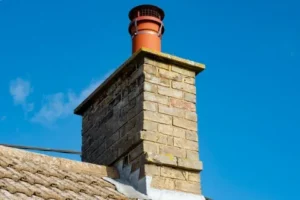 If you’re like most homeowners, you probably don’t think much about your chimney liner until something goes wrong—smoke backing up, odd smells, or even a failed home inspection. But knowing when to install a new chimney liner isn’t just about fixing problems. Timing it right can keep your home safer, help your wallet, and extend the life of your fireplace for years to come. In this guide, we’ll walk you through the best time of year to schedule that installation, what to watch for, and why it matters for your chimney liner.
If you’re like most homeowners, you probably don’t think much about your chimney liner until something goes wrong—smoke backing up, odd smells, or even a failed home inspection. But knowing when to install a new chimney liner isn’t just about fixing problems. Timing it right can keep your home safer, help your wallet, and extend the life of your fireplace for years to come. In this guide, we’ll walk you through the best time of year to schedule that installation, what to watch for, and why it matters for your chimney liner.
Why Timing Your Chimney Liner Installation Matters
Think of your chimney liner as the shield that keeps heat, smoke, and dangerous gases where they belong—out of your living space and away from your family. When it’s damaged or missing, not only are you at risk of chimney fires, but your heating system’s efficiency also takes a hit. The trick is, chimney professionals get busy at certain times of year, and weather plays a bigger role than you might expect in getting the job done right.
Pro tip: Scheduling your installation at the right time can mean faster service, lower costs, and smoother inspections.
The Best Time of Year: Spring and Early Summer
If you want to avoid the rush and save money, spring and early summer are hands-down the best seasons for chimney liner installation. Here’s why:
- Contractor Availability: Once the weather warms up and the winter heating season ends, chimney professionals have fewer emergency calls. That means you’re more likely to get your preferred appointment and, often, off-season discounts.
- Optimal Weather: Chimney work is safest and most effective when there’s no snow, ice, or heavy rain. Spring temperatures make it easy for installers to access your roof, and materials like stainless steel or clay can cure or settle without the stress of freezing cold.
- Ready for Next Winter: Having your new liner installed before the next cold snap means you won’t be caught off guard. You’ll be able to use your fireplace or wood stove as soon as the temperature drops.
According to one seasoned chimney sweep,
“The best installations are always done when we have time to do things right, and that’s almost never in the middle of winter. Spring is when we can focus on quality, not just speed.”
Fall & Winter: Is It Ever Too Late?
Life happens, and sometimes you don’t realize you need a new liner until the weather turns cold. While it’s possible to install a chimney liner in fall or even winter, there are a few trade-offs:
- Higher Demand: As soon as the first chilly night hits, everyone remembers their fireplace. Chimney professionals get booked out weeks in advance. Emergency services may be available, but you’ll likely pay a premium.
- Weather Delays: Snow, rain, and icy roofs can slow down or even postpone jobs. If you’re in a pinch, some companies offer rapid response, but it’s best to avoid the last-minute rush.
If you’re facing an urgent need—like a failed home sale inspection or a sudden chimney blockage—don’t wait. Emergency chimney liner installation services are available year-round, but expect a higher bill and possible weather-related delays.
Key Features & Safety: What to Look For
When choosing a new chimney liner, it’s not just about timing. Look for these key features to maximize safety and efficiency:
- Material: Stainless steel liners are durable, flexible, and work with most fuel types. Clay tiles are traditional but harder to retrofit. Aluminum is suitable for some gas appliances but not all.
- UL Listing: Make sure the liner is UL-listed for safety and compliance with local codes.
- Professional Installation: A certified chimney sweep will ensure the liner is the correct size and properly sealed, reducing the risk of fire or carbon monoxide leaks.
- Warranty: Look for products with long-term warranties and clear service guarantees.
Remember, a properly installed chimney liner isn’t just about passing inspection—it’s about keeping your home and family safe year after year.
Chimney Liner Costs & Emergency Services Comparison
| Season | Average Cost | Wait Time | Emergency Services Available? |
|---|---|---|---|
| Spring/Early Summer | $1,200 – $3,000 | 1–2 weeks | Yes (usually not needed) |
| Late Summer/Fall | $1,500 – $3,500 | 2–4 weeks | Yes (higher cost) |
| Winter | $1,800 – $4,000+ | 3–6 weeks | Yes (highest cost) |
Note: Prices vary based on liner type, chimney height, and local labor rates. Emergency services often cost 20–40% more.
Conclusion: Plan Ahead for a Safer, More Efficient Chimney
Installing a new chimney liner is one of the smartest moves you can make for your home’s safety and energy efficiency. While you can technically have it done any time, planning your installation for spring or early summer will save you money, reduce stress, and ensure your fireplace is ready when you need it most. Don’t forget to ask about safety features, certified installation, and emergency service options if you’re in a bind.
With a little forethought, your chimney liner installation can be a once-and-done upgrade that keeps your home cozy, safe, and efficient for years to come.
Read more: Clearwater Chimney Sweep

